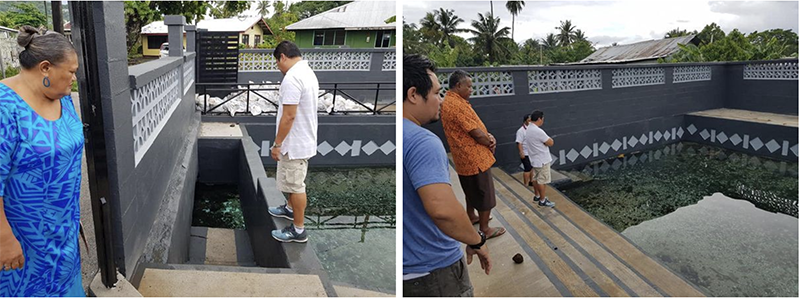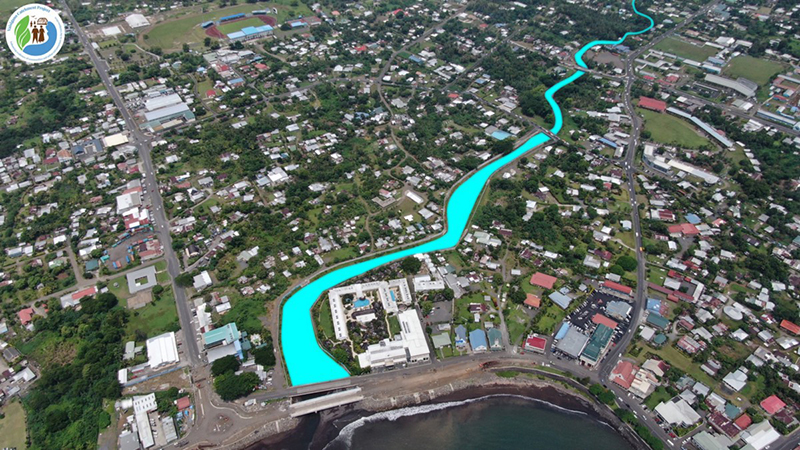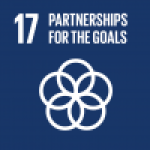It could have been worse.
That’s what Lagi Keresoma, a resident of Samoa’s capital Apia, said about the effects of the floods that inundated her property and many others in the area on the morning of 18 December 2020.
“Although this flood was quite destructive, it could have been much worse if it weren’t for the upgraded work on the Vaisigano wall that has protected many families from re-experiencing the impacts of Cyclone Evan in 2012. When Evan hit, many homes were swept away then when the ocean surge hit the Apia area and the Vaisigano river overflowed its banks causing major destruction to homes. Lives were lost too. The area was vulnerable to the ocean and the river,” said Ms Keresoma.
Her sentiments were echoed by other residents.
The reduced impact was due mainly to mitigation measures put in place over recent years, supported by the United Nations Development Programme and funded by the Global Environment Facility and the Green Climate Fund.

Flood waters surged through the entire town area on December 18, 2020, wreaking havoc on homes and businesses in low lying areas in the vicinity of Apia. One of the worst hit areas is Convent St and the Togafuafua Road (above), which merged into one during the floods — one couldn’t tell one from the other. Photos: UNDP Samoa
Freshwater supply protected
One of the measures put in place, funded by the Global Environment Facility through the UNDP’s Small Grants Programme, was the rehabilitation of the village of Apia’s natural spring pool, Fuipu’a, completed last year. A key source of drinking and bathing water for the village, it became a lifesaver for many families in the area during and immediately after the recent floods.

Fuipu’a pool last year after its refurbishment. This is a classic example of a community-led project (initiated by the village’s women’s committee) and designed and built by an engineer and experts from the village, to suit local community realities. GEF SGP provided the funding of materials but labour was provided in-kind by the village. Photos: UNDP GEF SGP Samoa
The pool, which lies in the heart of Apia, has served many families in the village and the greater Vaimauga area, over the years. Yet previous floods and cyclones, as well as pressure from urban developments, had left the pool damaged.
However, when it mattered the most during the recent flash floods that caused water supply in the area to be dirty and unsuitable for consumption, the pool once again came to the rescue.
This was due largely to a stable infrastructural facility that protects the main water source within the pool. The surrounding fence also kept out the flood waters and kept the pool water clean for bathing. There is also a drinking pool, well kept at the end of the pool.

During the floods, dirty water was kept out making the pool available for public use even before the floodwaters receded. This was crucial as the main water supply was deemed unsuitable for consumption for a period of time, due to flooding. Village people flocked to Fuipu’a to fetch drinking water, and for bathing. Photos: Fata Chris Aluni
“We had minor incidents such as dirty drinking water, but we are thankful for the UNDP-GEF Small Grants Programme (GEF SGP) for funding the upgrade of our Fuipu’a pool. In the past, the pool had to go through a cleaning period after every flood, however, since being upgraded, it was spared the wrath of the flood. It remained clean throughout and it was the avenue people turned to for drinking and bathing water,” said Ms Keresoma, who lives right by the pool.
UNDP Samoa acknowledged the strategic partnership between the local community and the GEF SGP that led to the success of this project.
“This project was designed and built by a local contractor, PPG, and has truly showcased the importance of conserving and rehabilitating village natural pools to be used as a back-up resource during natural disasters like cyclones, floods, droughts, etc, to be used by the villagers when the main water supply is contaminated. This also demonstrates the high impact of small grants being well utilised to protect natural resources, to allow them to withstand adverse conditions,” said UNDP Resident Representative, Jorn Sorensen.
Improved drainage
Another measure put in place prior to the floods, was improved drainage in the town area.
This was done under Samoa’s biggest climate change adaptation project, the 6-year, US$65.7 million Vaisigano Catchment Project, which is co-financed by the Green Climate Fund and the Government of Samoa.
One of the project’s main aims is to fix the drainage system in Apia, as this has been a constant problem.
Since early 2020, upgrades have been made to the Malaefatu Reserve, Sogi, nine hazardous drainage sites in Apia, and one in front of the Mulivai Cathedral. Upgraded pipe culverts and manholes have been installed to improve draining capacity and reduce flooding impacts in the area.
These areas showed a notable difference compared to others in the vicinity during and after the December floods.
The foreground of the Catholic Cathedral in Apia would normally be inundated with water during past floods. Improved drainage has led to no flooding in this area during the recent flash floods. Photos: UNDP Samoa
(left) Mulivai Cathedral foreground on December 18th 2020. Photo: UNDP Samoa. (right) The same area in October 2020 during upgrades to the drainage system. Photo: GCF VCP
In anticipation of the cyclone season, the Vaisigano Catchment Project also handed out tools to the village of Apia earlier this year to clean up waste in the Vaisigano river bed and surrounding areas. This helped minimize the debris during the floods which also reduced blockage to the river flow.
These tools also came in handy for the cleanup that ensued after the floods.
The Green Climate Fund has continued work by the Global Environment Facility to erect river walls under the ‘EWACC’ Project, or Economy-Wide Integration of Climate Change Adaptation Project.
“Since the construction of the Vaisigano wall, the river has flowed flawlessly out to the sea, and the recent flooding was a testament of the great work done in ensuring the security and safety of the people living around the area. We always expect the worst during flooding in this area, but not this time. The river rose but the wall was like a knight in shining armour that stood as a guard for us all,” said Ms Keresoma.
The EWACC wall at Vaisigano stopped a lot of water that would normally flood the surrounding areas. The new GCF Vaisigano Catchment Project continues the work done under EWACC, extending far beyond the Leone bridge. Photo: GCF VCP
Extreme weather events in Samoa
The broader economic and human impacts of the recent floods in Apia are still being collated with preliminary estimates already running into the millions. However, one thing is certain — climate change is and will continue to drive more frequent extreme weather events in small islands like Samoa, as has never been seen and experienced before.
The Samoa Meteorological Service said December’s flash floods were caused by prolonged intense rains, and the land’s capacity to absorb water.
Automatic Rain Gauges observations graphed; receiving rainfall as high as 270mm/24hrs which affected the country on Friday 18th December 2020. Source: Samoa Met Service
The way forward
Climate adaptation projects funded by the GEF and GCF will last into the future, with various aspects now being implemented and in the pipeline.
“We are thankful to God for all these projects which have provided sound infrastructure as a mix of both hard and soft solutions to respond to the adverse impacts of extreme weather events associated with climate change. They are significantly helping to reduce the risk of such impacts and allowing time for residents and people to evacuate to higher grounds when events such as those of December 18th arise again in the future,” said the Assistant Chief Executive Officer, Climate Change & GEF Division at the Ministry of Natural Resources & Environment, Galumalemana Anne Rasmussen.
This story by Laufaleaina Lesa, Communications Analyst, UNDP Samoa, first appeared on Medium on December 29, 2019.






